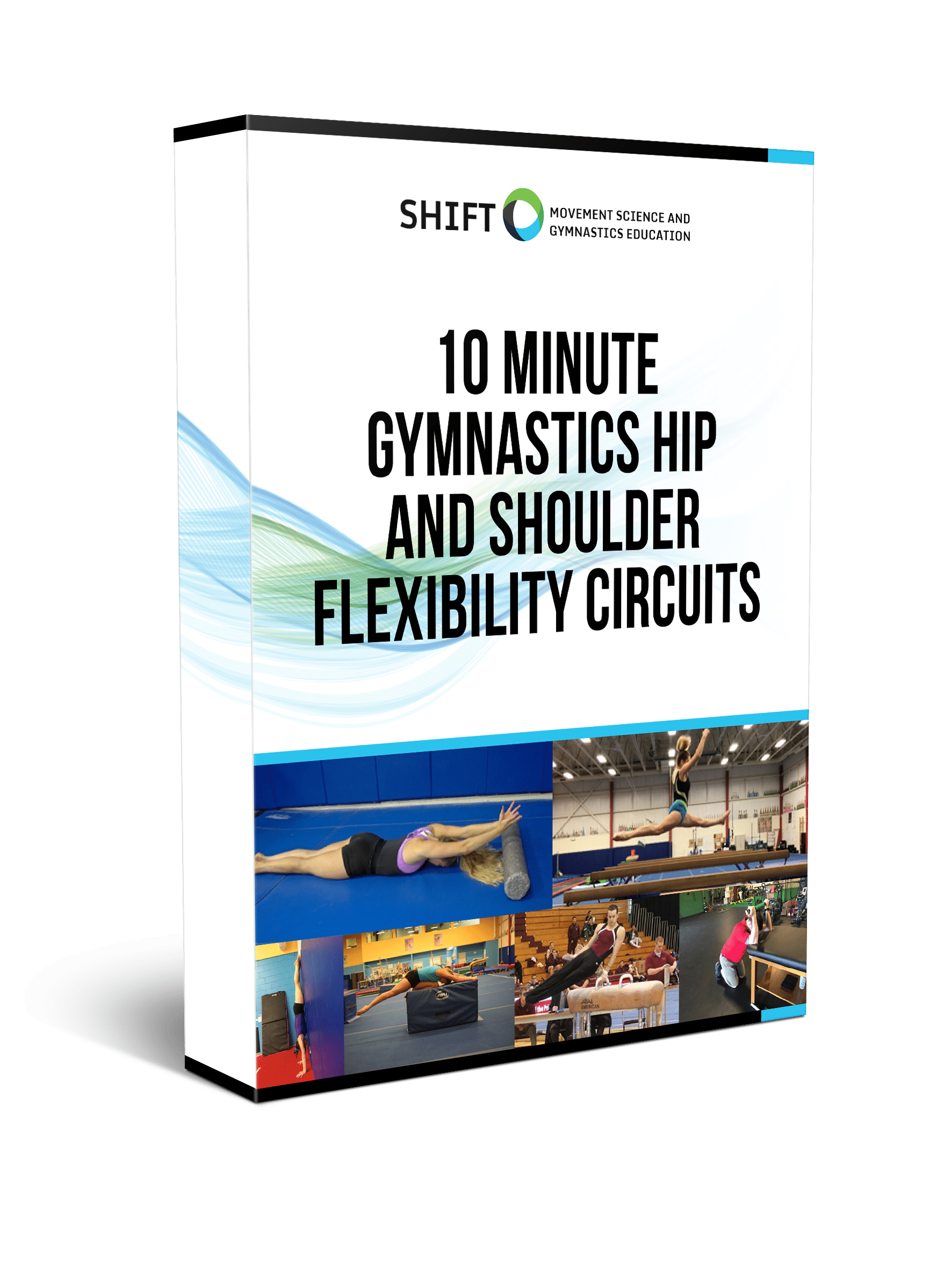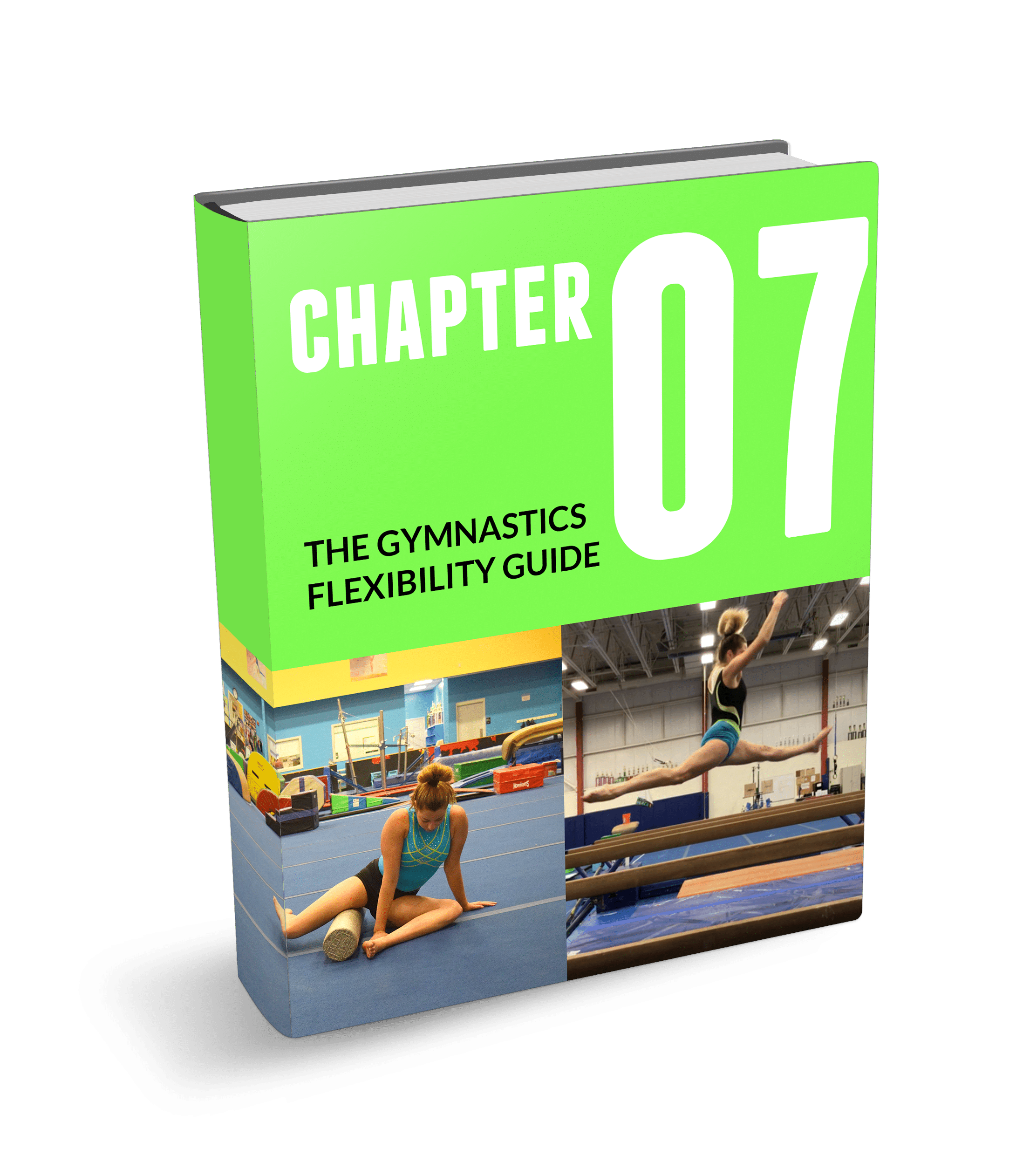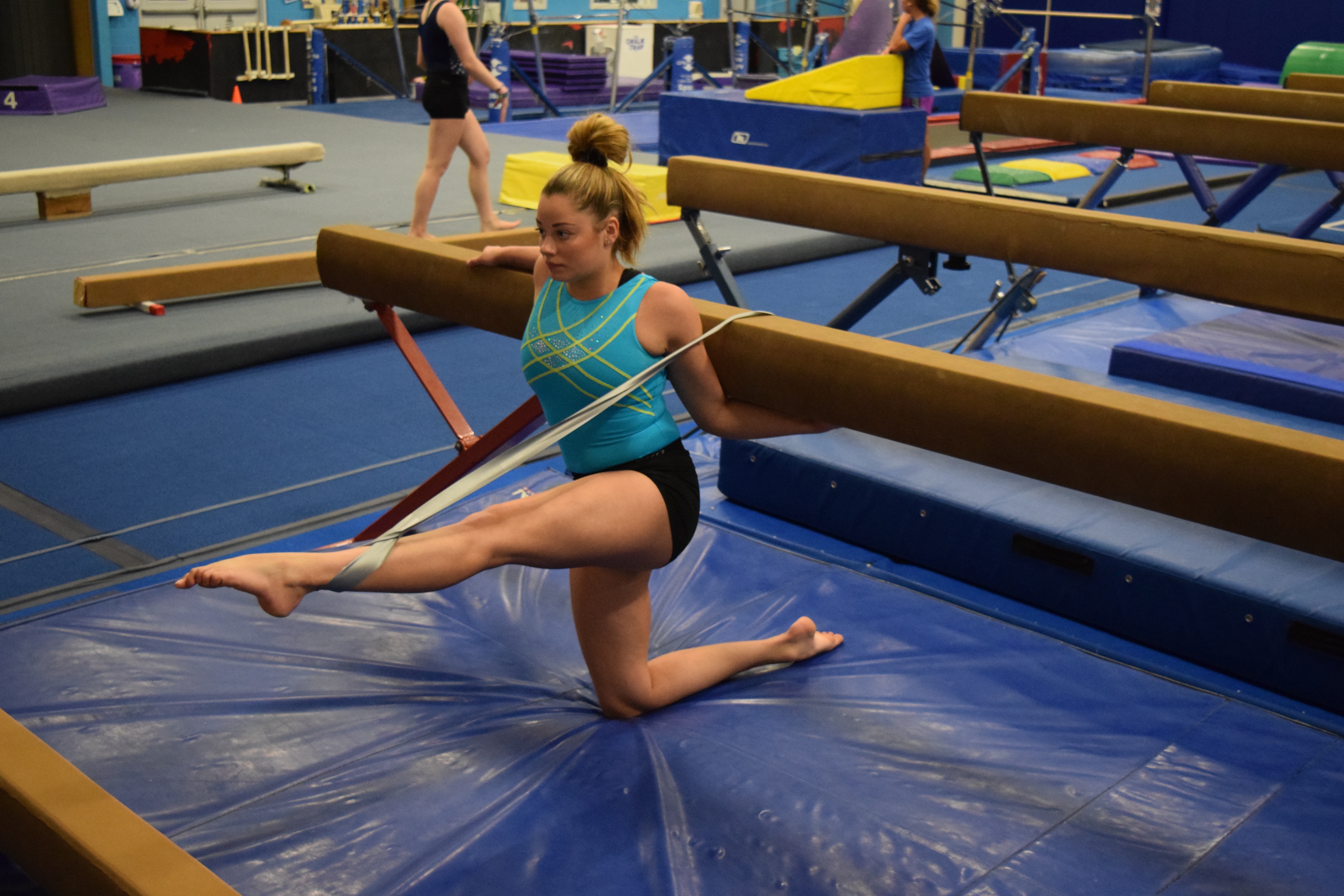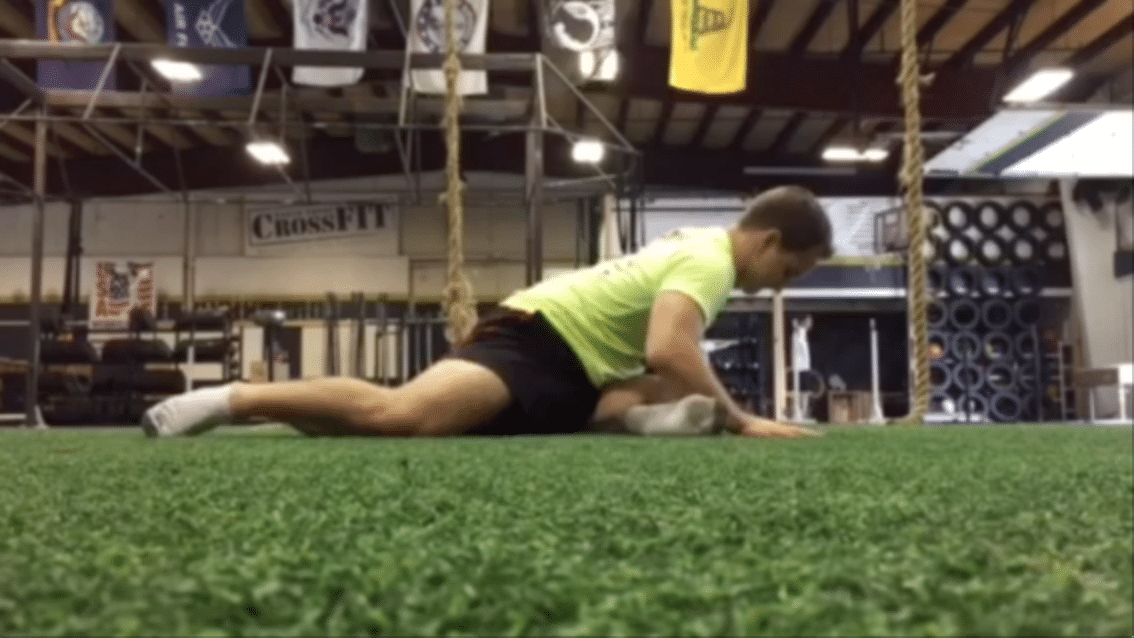Elastic Band ASSISTED Hip Drills For Better Angles and Control
Elastic band drills are all over gymnastics mainly being used as added resistance to hip motion. In the right scenario I think the resistance can be useful. However, I have noticed many gymnasts I work with show huge passive hip motion, but lack the control to access the range actively against gravity alone . They often use excessive momentum or other body segments to reach the desired hip angle a skill requires. The most common scenario is lower back hyper extension or excessive speed of a leg kick to make up for lacking hip extension. Not only does this fail to correct the hip extension control issue, it also may lead to overload injuries in the adjacent areas that are doing to much work (insert high rates of back pain in gymnasts).
Before you read more, remember if you want to learn all of the thoughts I have on gymnastics hip flexibility for free, be sure to check out my Gymnastics Flexibility Guide and 10 Minute Flexibility Circuits, which are both available for PDF download here.
Download My New Free
10 Minute Gymnastics Flexibility Circuits

- 4 full hip and shoulder circuits in PDF
- Front splits, straddle splits, handstands and pommel horse/parallel bar flexibility
- Downloadable checklists to use at practice
- Exercise videos for every drill included

The Gymnastics
Flexibility Guide
- Cutting edge soft tissue, strength, and active flexibility techniques for splits, handstands, and shapes
- Practical traditional stretching methods combined with latest scientific research
- Techniques for increasing flexibility, and making changes transfer to gymnastics skills
We take our privacy seriously and will never share your information. Click here to read our full privacy policy.
In this case, I think rather than jumping to using the elastic bands as resistance, we first need to first take a step back and gain full motion with good control. With this concept in mind and after watching my athletes, I have started using elastic bands to assist these gymnasts first. Here are a few drills I came up with as an example,
We pre-tested some jumps and leaps, then used these drills in a circuit, then went back and re-did more jumping and leap drills. As a summary, here’s how I break it down practically during training
- Athlete doesn’t have desired passive range = individualized movement assessment and specific mobility work
- Athlete has range passively available, but not active= band assist (motor control drills)
- Athlete has range passively, and good control of range actively = no band assisted or resisted (anti gravity control), and other drills aimed at full range or end range control
- Athlete has range actively without significant compensation = band resistance to add difficulty (loading of range to maintain and transfer to skills)
I think this concept is important to apply to the hips and shoulders of all our gymnasts to promote athlete individualization, and make sure we are fostering progressive adaptation during training. If we jump to applying resistance to all our gymnasts when they don’t even have the control of their limbs against gravity, we may be promoting ongoing compensations and problematic movement patterns during skills. My best advice would be to take a step back and think about what their movement is showing, then apply the appropriate drill. Bands can easily be used to assist, do nothing, or resist a motion and help develop the skill. Give thema shot, and hope this helps.
Dave Tilley, DPT, SCS


